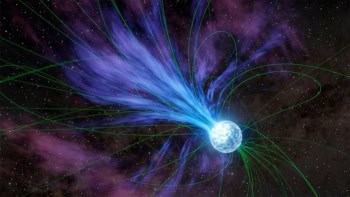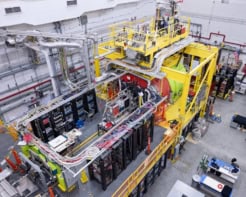A team of Russian and American scientists believe they may have created an element with 114 protons, the heaviest ever. If confirmed, this discovery would point to the existence of a whole new family of highly stable "superheavy" elements.
Researchers at the Dubna Laboratory of Heavy Ion Nuclear Reactions in Russia, headed by Yuri Oganessian, collaborating with a team from the Lawrence Livermore National Laboratory in the US, made the discovery by firing a rare isotope of calcium at a plutonium target. They bombarded the plutonium-244 day and night for a month, finding one “event” of the sort they were looking for. The subsequent sequence of decays – three alpha-particle emissions followed by spontaneous fission – has never been seen before and is unique to the superheavy-element region. This rarest of isotopes had an atomic mass of 289 and survived for 30 seconds before decaying.
The existence of element 114 is important because it would offer strong evidence for the long-sought-after superheavy “magic island” of stability first predicted in the 1960s. The most stable isotope on the island is though to have 114 protons, 184 neutrons (nine more than the Dubna isotope), and a half-life measured in millions of years, albeit with large error bars.
“The creation of this element puts us only on the shore of the island, ” says Albert Ghiorso, a nuclear scientist at the Lawrence Berkeley National Laboratory in the US. “But its discovery is enormously important since it shows that the putative island is really there.”
However, Ken Moody, leader of the US team, is still not 100% convinced by the result. “You have to consider the possibility of random events correlating to give you something that looks like a real event, ” he says. Moody hopes that within the next couple of weeks he will be able to say for sure whether element 114 really has been created in Dubna.



